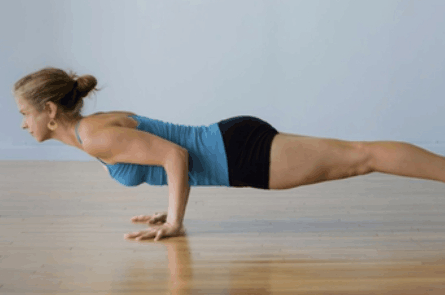Hello everyone, today we will explore the Four-Limbed Staff Pose in yoga, also known as Chaturanga Dandasana. This pose requires a lot of strength as the entire body is suspended with only palms and toes touching the floor. Failing to engage the right muscles can lead to improper alignment such as arching the lower back and lifting the hips, causing strain on the waist. Mastering the correct alignment in a pose is crucial to avoid potential injuries and maintain body integrity.
Let’s delve into the key points of this pose, starting from the feet and moving all the way up to the head. Ensure that the heels are perpendicular to the ground, creating a vertical line with the soles of the feet. Push back with the heels as if pressing against a wall, engaging the inner thighs to lift upwards. Keep the thighs engaged and lifting upwards, while the hips sink towards the heels, slightly tucking the tailbone. This action will elongate the lower back space. The strength generated from lifting the thighs upwards converges with the abdominal muscles, activating the core and preventing the abdomen from collapsing downwards.
Next, focus on the arms. It is essential that the upper and lower arms are perpendicular, creating a 90-degree angle. Ensure that the hands do not go beyond the shoulders. Position the hands slightly back towards the sides of the chest, and draw in the sternum to stabilize the push-up. Engage the shoulder blades towards the middle of the spine, leading the shoulders towards the tailbone. Maintaining perpendicular alignment of the arms will elongate the neck space, evenly distributing the body’s weight.
Now, a look into the muscles targeted by this pose;
From the top view, the highlighted red areas indicate the points where the muscles are engaged. This pose effectively strengthens the chest muscles (pectoralis major and minor), along with the trapezius muscles. It also works the abdominal muscles and the thighs, making it a full-body workout that activates and sculpts the entire body. Remember, fat occupies five times more space than muscle in the body.
The lower view reveals the engagement of the glutes, hamstrings, calf muscles, and neck muscles. Prioritize elongating the neck by extending upwards from the crown of the head for a comprehensive stretch. Avoid lifting the head directly; instead, start by looking downward and then extend the top of the head forward while pushing the occiput upwards. This method optimizes neck extension. Refer to the red arrows in the illustration for guidance.
The image below identifies an incorrect form of the pose. It is vital to maintain the perpendicular alignment of the arms to prevent unnecessary strain on the neck. Correcting such misalignments can relieve shoulder discomfort caused by undue pressure. Adjust the arm placement and head extension for better weight distribution.
The common mistakes depicted in these figures involve either lifting the hips excessively or lacking core strength, leading to collapsed form. Solutions include using yoga blocks for support under the shoulders or engaging a yoga strap around the lower ribs or abdomen to assist in lifting and activating the core. It is crucial to rectify alignment issues to maximize the benefits of the pose.
If executing the full pose seems challenging, modify by performing a modified version with bent knees resembling a modified push-up position. Gradually build arm strength through such modifications before attempting the full pose. Building strength incrementally is key to mastering challenging poses like Chaturanga Dandasana.
Following a series of practice sets at home, supplement with a gentle backbend to counteract the intense chest and arm engagement. This posture helps stretch the front body and relieve tension, serving as a balancing activity to the core-engaging pose. Embrace these recommendations to enhance your practice of Chaturanga Dandasana.
Thank you for reading! Take immediate action after this read and remember to apply these learnings in your practice. Let’s stay committed and motivated together!


